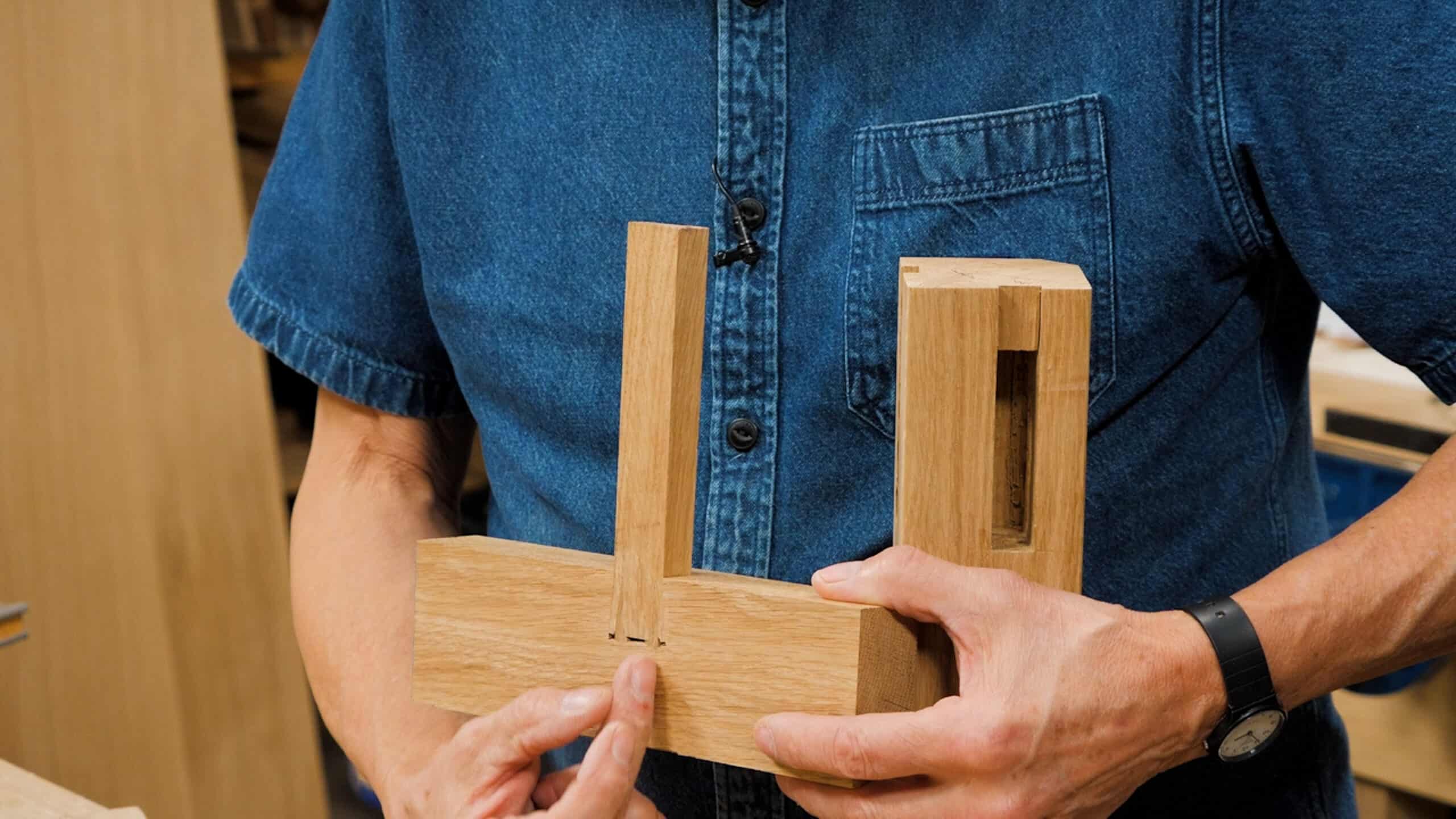Sellers Home Dining Table: Episode 9
Posted 23 March 2022
This is an episode in a paid series. Want to watch it? You just need to sign up as a paid member, and you can enjoy this video and many other videos we think you will love.
There is almost nothing ordinary or conventional about the work in this episode. Yet, all the way through it smacks of an innovative tradition. Often, when we design a new piece, aspects of the work necessitate the development of new techniques hitherto unseen for most. There are unusual features in this design that need exactly that and that makes this episode especially intriguing. It’s the unusual use of angled fox tail wedged tenons into the curved braces and the internal corners of the table legs. We know you will love learning from this episode!


My socks fell off – Thanks
metoo 😉
Top! 👌🤙🤘🙌👏
Blowing out the mortise usually gets dust in my eyes, and spit in the mortise 😉
Very nice!
Brilliant, I have never seen that before, makes a good solid joint that will never come loose.
Thanks for giving us that one Paul
Just too awesome.
I have done fox tenons on a number of projects and I have to admit that there is always a “pucker” factor when one finally brings the joint together. Always will be, I am sure. ✔
Nicely done!
I never force my joints in a pinch, I just get a BIGGER HAMMER!
Great video as always! thanks teach.
Outstanding as usual, Paul. Thanks for this, it was really educational. Just a comment on presentation – I’m really liking the approach where you’ve been going through the process and talking us through it, and then letting us watch the ‘repeated’ joints with no commentary but EXCELLENT detail views of the work. It’s very helpful.
I forwarded your kind feedback to the team. Many thanks
Brilliant work by the videographer(s)!!! The closeup shots provide the details I’m always after. Thank you team Paul for dedication and top rate content.
Michael
I forwarded your kind feedback to the team. Many thanks
Love how excited Paul is for this one. You can really sense the anticipation when there’s no going back. I felt like I was watching someone’s first dovetail come together! I’m excited to try and glad no one will be filming mine!
The joint Paul creates here at the leg-brace intersection is reminiscent of a traditional Chinese joint. Both Paul and the Chinese furniture makers tenon a relatively small brace into the inside corner of leg and attach to the underside of the table top.
Both flare the leg mortise to accommodate a wedge, which creates a joint that is compact and very strong. They handle the wedges differently — Paul’s fox wedge vs. the Chinese wedge filling a space in the mortise opening beneath the brace. Regardless, the fundamental design idea of a small wedged tenon in a flared mortise appears to be the same across the oceans and centuries. Great minds think alike, as the saying goes!
The designs differ slightly where the braces meet the underside of the table top. Paul’s braces cross at half-lap joints and are screwed directly to the top (Episode 10). The Chinese tradition fastened an anchor piece of wood to the underside of the top, married the braces to the anchor and fastened with pins.
Fascinating to see how Paul’s creativity and experience single-handedly approximate this aspect of a different culture’s distinguished woodworking tradition. Readers who’d like to see drawings of the Chinese joints I mentioned (much easier to grasp in drawings than in writing!) could have a look at the book, “Chinese Domestic Furniture in Photographs and Measured Drawings” by Gustav Ecke, Pages 7, 8 and 154.
Interesting, thanks for the referral Dale, I’m going to check that out.
Great instruction by Paul as always & production by the team as well.